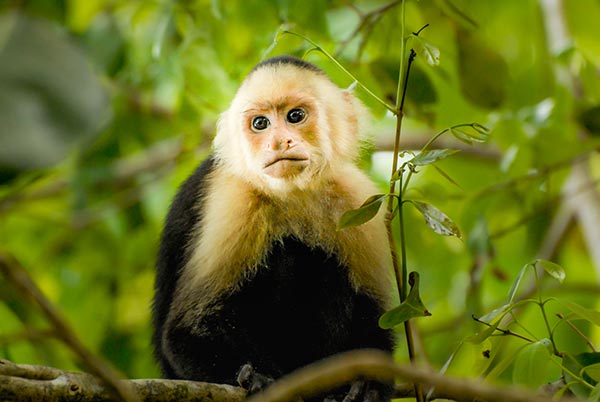
Advertisement
Scientists have long considered capuchin monkeys to be one of the most intelligent monkeys in the world. These small primates have been observed using tools in their natural habitat in the wild. A recent study by archaeologists in Brazil shows that this tool use has been part of the capuchin’s history for much longer than imagined.
University College London archaeologist Dr. Tomos Proffitt and his colleagues have discovered that capuchin monkeys have been using tools for as far back as 3,000 years. Not only that, they’ve also identified trends in tool use, as the monkeys changed the types of tools they’ve used over time.
Capuchins’ tool use has changed over multiple generations
Proffitt and his colleagues have been excavating a site in Brazil’s Serra da Capivara National Park where, to this day, capuchin monkeys continue to use tools to smash open cashew nuts. Here, the team recovered 122 identifiable capuchin stone artifacts.
To figure out the age of the artifacts, the archaeologists used a method called radiocarbon dating. This method involves measuring the amount of carbon-14 present in a material to tell its age. As carbon-14 slowly decays over time, the less of it that is present, the older the item is.
Using this method, the archaeologists found that the capuchin monkeys have been using these tools to crack open nuts for around 3,000 years, or the equivalent of about 450 generations of monkeys. What they found more interesting, however, was the fact that the types of tools the monkeys used changed over time. The monkeys had, for some reason or another, changed their nut-cracking tactics, as well as the tools they used, over time.
Shifting trends in monkey tool use
According to the study, the monkeys at the site first started with smaller and lighters stones to get their food. However, sometime between 2,500 to 3,000 years ago, the monkeys switched to larger and heavier stone tools. After some time, the monkeys once again switched back to smaller stone tools. This latter trend has continued up to the present day.
Proffitt and his fellow archaeologists have put forward a number of theories on why the monkeys switched tools. The first theory posits that different groups of monkeys used different sized stones. The alternative theory is that cashews, which are the monkeys current main source of food, may have been less readily available certain points in time. This would have forced the capuchins to use switch to other types food, requiring different tools to open.
Tool-using animals
With this recent study, capuchin monkeys become one of the very few animals to gain an archaeological record. Aside from human beings, the only other animals with such a record are chimpanzees. Capuchin monkeys and chimpanzees, however, aren’t the only animals that use tools — a number of other animals have been known to use them as well, including other great apes such as bonobos, gorillas and orangutans. (Related: MONKEY MARKETING: Indonesian monkeys STEAL objects from tourists, then BARTER them to other people for food.)
Outside of monkey and apes, sea otters have been known to use rocks to smash open crabs, sea urchins and clams, much in the same way capuchins use them to crack open nuts. Corvid birds such as crows and ravens have also been observed using tools. In fact, some studies have noted that the way certain species of crows use tools is more advanced than that of chimpanzees. More interestingly, certain species of octopuses have also been observed using discarded clam shells and coconut husks as protection, wearing them like suits of armor.
The common denominator among all these animals is their intelligence, with scientists counting them to be some of the most intelligent of their kind. With this in mind, studying how these animals use tools, and in the case of the capuchins, how their use has changed over time, can give further insight into how our own intelligence developed.
Sources include:
Advertisement
Advertisements
















